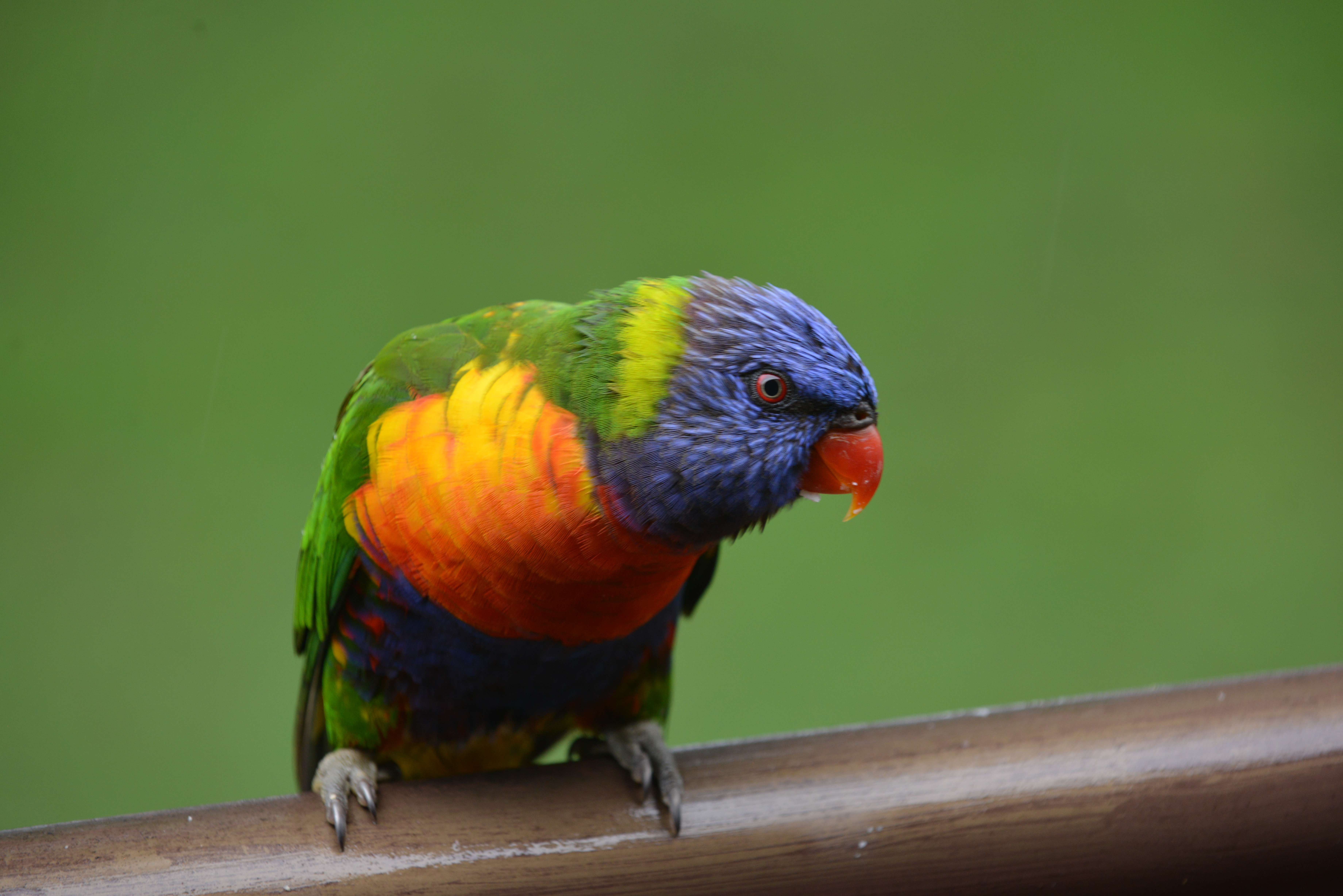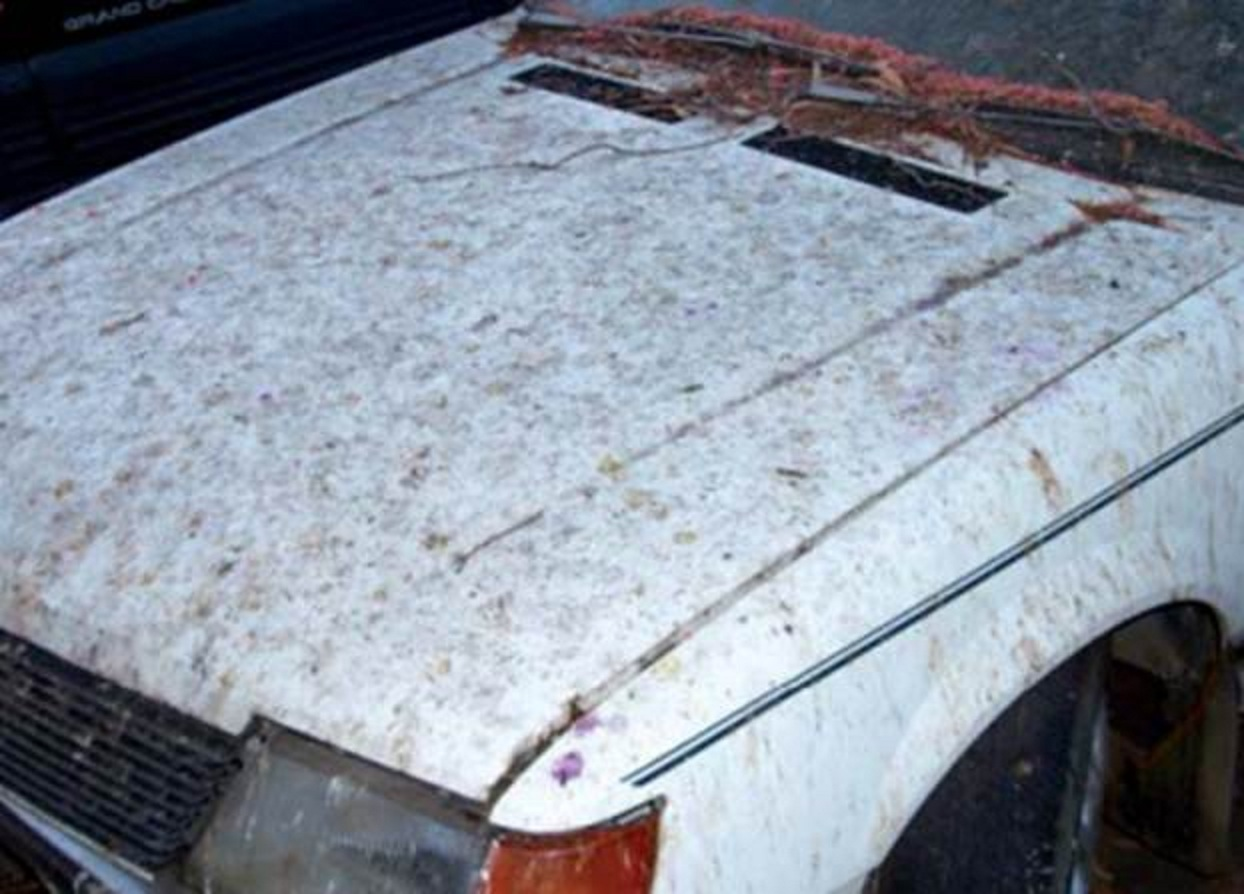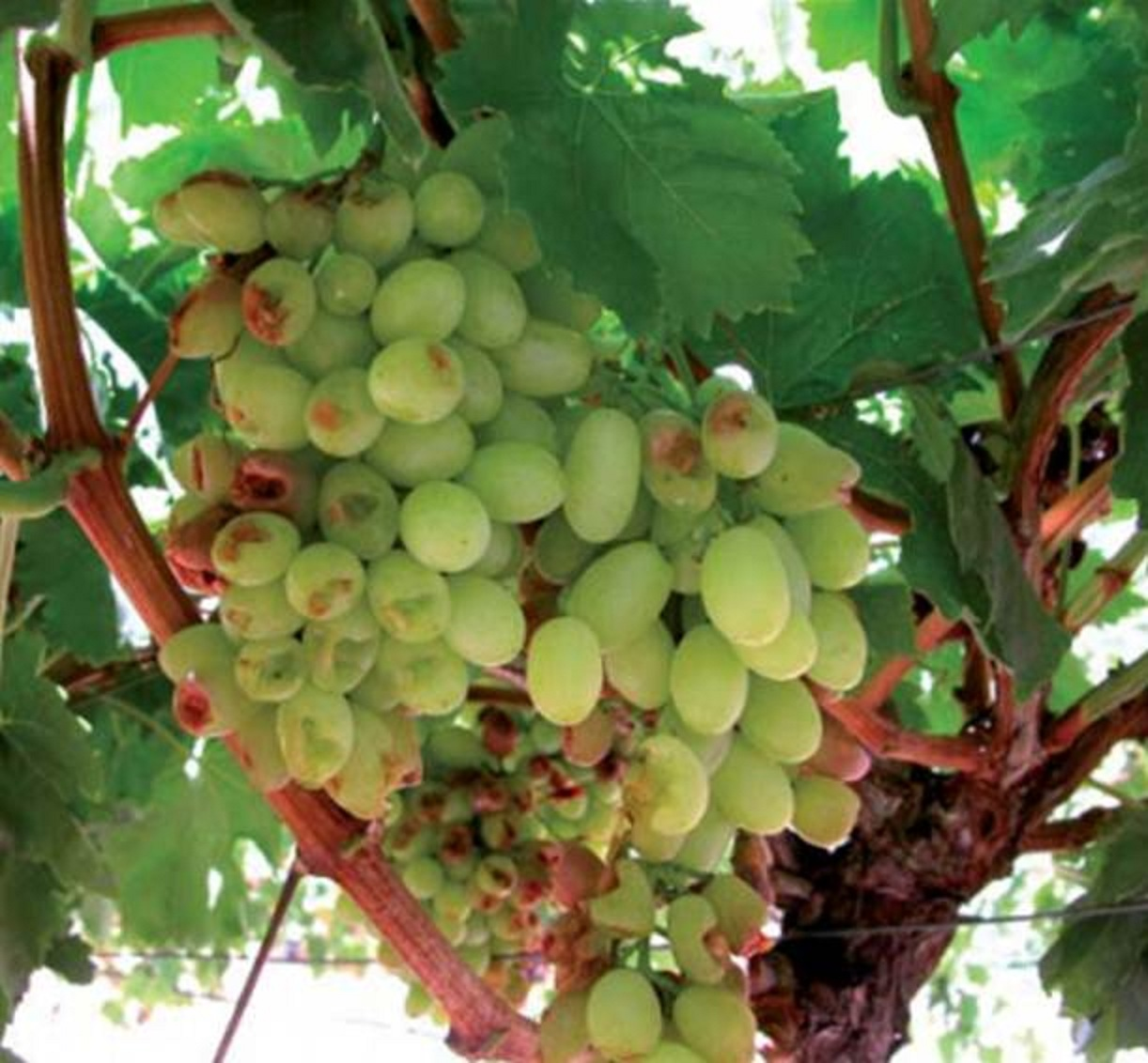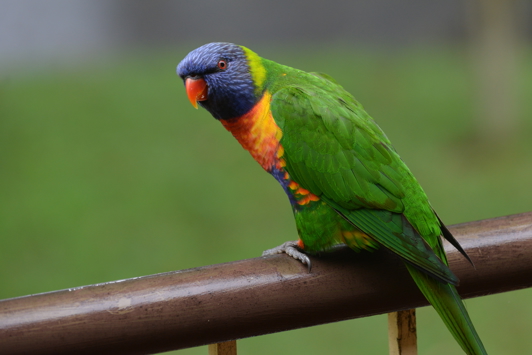The rainbow lorikeet has been established in Perth, Western Australia, since 1968. From fewer than 10 escaped or released birds, the pest bird is now well established in metropolitan Perth.
Under legislation administered by the department, rainbow lorikeets are declared pests in WA in all areas south of the Kimberley, including metropolitan Perth. This means private, municipal, and state government landholders are responsible for control of lorikeets on their land.
In southern parts of the state, including metropolitan Perth, no rainbow lorikeets, including those captured or rescued, can be legally released into the wild.
In Perth, rainbow lorikeet problems include:
- damage to backyard fruit crops
- fouling of outdoor areas and vehicles with droppings
- competition with other species for food and nest sites
- noise
- in the Swan Valley, damage to commercial table and wine grape crops
- damage to fruit in orchards in the Perth hills
- they are carriers of Psittacine beak and feather disease and pose a potential disease risk to wild and captive parrots.
Under the Biodiversity and Conservation Act 2016, administered by the Department of Biodiversity, Conservation and Attractions (DBCA), rainbow lorikeets are classed as managed fauna in areas south of the Kimberley. As managed fauna, they can be taken or disturbed without the need for a license.
Given the size of the lorikeet population in Perth, eradication is unlikely but a reduction in the numbers at key locations may be possible. To prevent satellite populations establishing in the wild, the department retrieves or removes rainbow lorikeets from regional locations.
It is essential to report any lorikeets in the wild outside metropolitan Perth so they can be safely retrieved or removed.
Report suspected rainbow lorikeets
Be aware of any new or unusual birds, note the date, time, and location of the bird and take photographs, if possible.
How to report your observations
- Use MyPestGuide Reporter app or online, available on the website at dpird.wa.gov.au or email mypestguide@dpird.wa.gov.au.
- Contact our Pest and Disease Information Service (PaDIS) by calling +61 8 9368 3080 or email padis@dpird.wa.gov.au.

More information
A scientific risk assessment conducted by the department indicates the rainbow lorikeet poses an extreme threat to WA because they are highly likely to establish more widespread populations and become a significant pest.
Keeping lorikeets as pets
A fauna possessing (pet keeper's) license from the Department of Biodiversity, Conservation and Attractions is required to keep lorikeets as a pet in WA. For a license, refer to the Licensing and permits - fauna page on the website at dbca.wa.gov.au/licences-and-permits/fauna.
Many lorikeets kept as pets have little monetary value. Lorikeets with metal bands on their legs, showing they were kept as pets, have been recovered from the wild in Perth and elsewhere. To prevent escape and release, lorikeets must be maintained in a secure aviary under licence. Unwanted birds should be surrendered, not released to the wild.
The rainbow lorikeet is a major pest of agriculture in Australia. It is a serious pest of cherry, apple, pear, stone fruit, grape, and vegetable crops, and field crops such as sorghum, flowers, and ornamentals. Rainbow lorikeets cause significant damage to commercial table grape crops in the Swan Valley and orchard fruit crops in the Perth hills.
Lorikeets damage suburban garden fruit and flowers, foul outdoor areas and vehicles with droppings, and harass and compete with native birds. Lorikeets will feed on backyard grapes, figs, pears, apricots, nectarines, loquats, mulberries, mangoes, passionfruit, cherries, apples, peaches, plums, and guavas.
Rainbow lorikeets aggressively protect feeding and nesting resources and often exclude native species. They are carriers of Psittacine beak and feather disease and are a potential disease risk to wild and captive parrots.

Damage to a vehicle caused by lorikeet droppings. Photo – courtesy Garry Gray©
The rainbow lorikeet is a small, brightly coloured parrot 26 to 31 cm in length, and weighing 105 to 130 g. Male, female, and immature birds look similar, with young birds slightly duller in colour. They have a bright yellow-orange to red breast, a mostly violet-blue throat, and a yellow-green collar.
Lorikeets are noisy, continuously screeching while in flight, feeding, and at their roosts. They fly swiftly with rapid whirring wing beats and display flashes of dark green and bright red.
Distribution
Various subspecies of rainbow lorikeet occur naturally in Indonesia, Papua New Guinea, the Solomon Islands, Vanuatu, New Caledonia, and northern and eastern Australia. The red-collared lorikeet (T. haematodus rubritorquis) and varied lorikeet (Psitteuteles versicolor) are native to the Kimberley region in WA and northern Australia, generally.
Habitat
In Perth, rainbow lorikeets occur in areas where mature exotic vegetation and trees are present. They thrive in areas with lemon-scented gums, date and cotton palms, Norfolk Island pines, and coral and fig trees.
Reproduction
Lorikeets nest in tree hollows and on platforms at the base of palm tree fronds, where they excavate a nest. Breeding can occur from April to December and most nestlings fledge in August. Pairs may breed twice per year when conditions are favourable.
Diet and behaviour
Rainbow lorikeets eat pollen and nectar, foliage, fruit, seeds, and flower parts. They feed from exotic lemon-scented gums, spotted gums, cotton palms, date palms, coral trees, fig trees, native jarrah, marri, and sheoak. They take invertebrates, such as lerp and psyllids, from leaves and twigs.
Rainbow lorikeets roost in large, noisy groups that leave the roost at dawn. Large foraging flocks of 10 to 50 birds can travel more than 50 km to feeding sites. Lorikeets fly high and rarely go to ground, spending most of their time in the outer foliage of tall trees.
The legal status of the rainbow lorikeet means that landholders, government, and the community have a role to play in the management of the bird.
Our department and DBCA assist commercial fruit producers in their local management of rainbow lorikeets by raising awareness and providing advice and management options in affected areas.
Managing the impacts of rainbow lorikeets at a local level is difficult and expensive. There is no simple solution unless anti-bird netting is used. Using several control tactics together with neighbours is likely to be more effective than relying on any one tactic at a location. For example, shooting birds combined with a variety of scaring devices.
It is important to note that, unlike other parrots, lorikeets can travel widely in search of food, so some of the management options used for other parrot species may not be as effective.
Animal welfare
All lorikeet management activities must comply with the Animal Welfare Act 2002, which requires that pest animals are handled and killed humanely. Only competent persons should undertake control activities, all other persons should seek veterinary or other expert assistance.
Ways to reduce crop damage by pest birds
- Consider whether the benefits of acting to decrease damage will outweigh the cost and effort. Trials carried out by the department have shown that for other parrot species, sometimes the most cost-effective measure is to do nothing, especially for low-value crops.
- Adequate resources (money, labour, and equipment) should be set aside to deal with damage problems.
- Cooperation among neighbours may help in the efficient and effective use of management options, especially in areas with several small holdings.
- Every situation is different. Management combinations that work at one location may not work at another. Also, not all bird species react the same way to a control option.
- Instant reduction in damage is unlikely. Management needs to be exercised throughout the whole time when damage occurs, otherwise the effects will be short-lived.
- Scarers or shooting should be used occasionally throughout the year to maintain a degree of wariness in the birds and convince them the area is not safe for feeding.
- Crops should be regularly checked for signs of damage. This allows early action to be taken before the birds become reliant on the crop for food or develop a habit of visiting the crop.
- It is important the birds associate human activity with danger. They soon lose their fear of humans if not harassed with real danger or a good simulation of danger.
- Management efforts should be random with respect to the time at which they occur, the type of devices and vehicles used, and the people involved. This reduces the opportunity for birds to get used to a routine and become complacent about devices, vehicles, or people. For example, setting and forgetting scaring devices is less likely to be effective than more strategic, non-repetitive use.
- If there are no alternative food sources (like flowering plants or a sacrificed part of the crop) located where the birds can feed undisturbed, it may be difficult to scare birds from the main crop. They may be reliant on the crop for food and return to it.
- Assess the level of damage and effectiveness of management programs to indicate whether they are successful, or next season resources could be better used elsewhere.
What members of the public can do
To assist in the collection of information of rainbow lorikeets, please report to the department when birds are seen for the first time in your area, what damage they are causing, and any large roosting sites observed (roosting sites can only be confirmed if birds are still present in trees after dark).
Even if you are not being directly affected by lorikeets, support local businesses that are affected and be mindful of the responsibilities of all landholders to manage the birds.
What fruit growers can do
Be aware of your legislative responsibilities to manage lorikeets and the management options available. To assist the local coordination of management activities, it is important that you report lorikeets on your property when they are first seen, and when they are damaging crops.
If you plan to manage lorikeets on your property, respect your neighbours and their lifestyles.
Provide your neighbours with a copy of this factsheet and other publications and discuss the pros and cons of various management options to help your neighbours understand the need for sometimes noisy and visually unpleasant pest bird management options.

Legal methods
Anti-bird netting
When and where used
Enclose crops with temporary or permanent netting, which is available from several specialist companies and rural and hardware suppliers.
Benefits
Effective, long term, and humane when properly installed.
Costs and other considerations
- High initial capital outlay and not economic for protection of low-value crops.
- May obstruct farming practices.
- Require maintenance unless properly designed.
- Loosely applied nets or nets with large mesh-size, in which birds can be entangled, cause animal welfare issues.
- Reduces air movement so may increase crop disease problems.
- Can exclude beneficial predators and increase insect damage.
- Could move birds to other types of crops like wine grapes.
Scaring
When and where used
- Various devices (for example, bio-acoustic sounds, laser lights, fire hoses) used in combination at feeding, loafing, and roosting sites.
- To be effective, may require alternative foods at another location the birds can move to, and the use of firearms.
Benefits
Humane and safer in built-up areas.
Costs and other considerations
- Often costly, as necessary to apply continually, with devices being rotated to be effective.
- Scarers may breach noise regulations, and bird-scaring ammunition (like Bird Frite®) can be a minor fire risk during dry periods.
- Reported to be ineffective on some properties in the Swan Valley.
Alternative foods
When and where used
- Alternative flowering or fruiting plants attractive to lorikeets that are placed or planted away from the crop, while scaring continues only at the crop.
- A variation is to sacrifice a corner of the crop to the birds, where they are left undisturbed.
Benefits
In tree plantations, alternative foods are somewhat effective on ringneck parrots, but effectiveness against lorikeets is uncertain.
Costs and other considerations
- Alternative foods must always be available during the damage season or birds could shift back to the crop.
- Alternative foods may attract birds to the area in the first place.
Cover or remove vehicles or other items
When and where used
- Roost or food trees can usually be identified by the noise the birds make.
- Vehicles or items beneath can be covered or moved to avoid fouling.
Benefits
Low-cost alternative
Costs and other considerations
When removal is not possible, a cover may be an option.
Shooting
When and where used
Firearms must be licenced and used in accordance with the Firearms Act 1973. Suggested firearms for use only at close range include:
- Air Rifle (0.17, 0.22)
- Rifle (0.22)
- Z Long (29 grains)
Ammunition
- Shotgun (0.410), shot size 6 to 9
- (12 gauge), shot size 6, 8.
Benefits
Humane, if properly carried out. Effective when used intensively to reduce numbers. Birds learn to associate humans with real danger.
Costs and other considerations
- Use in built-up areas and small farms requires great attention to safety and animal welfare issues.
- Arrange with local police and inform the local shire beforehand, to avoid problems.
- Must be applied intensively.
- May not be effective in scaring birds.
- Shot birds may be replaced by another flock that finds the crop.
Live trapping
When and where used
- Illegal without a licence from DBCA (dbca.wa.gov.au).
- Attractants may include live lure birds or food (such as nectar or fruit), possibly in locations where lorikeets are feeding.
Benefits
May remove birds causing damage at the critical time.
Costs and other considerations
- Euthanasia can only be applied by experienced operators.
- Traps must have shelter, food, and water, and be checked regularly so the lure birds are cared for and trapped birds are removed.
- Effective trap designs and attractants are not yet available.
Mistnets
When and where used
- Illegal without a licence from (dbca.wa.gov.au).
- Only experienced operators can be licenced.
Benefits
May remove birds causing damage at the critical time.
Costs and other considerations
- Can only be used effectively where bird flight paths are known and at heights of less than approximately 3 m.
- High risk of injury to birds and operators when used by unlicensed operators.
- Euthanasia can only be applied by experienced operators.
Illegal methods of control that must not be used in WA
The following methods of control are illegal under Western Australian and Australian Government Legislation and must not be used.
Poisoning
Is not selective so may result in the death of native animals, birds, and pets. Crop contamination threatens markets.
Trapping and export and selling of birds
Wild-caught adult birds do not humanise, are not suitable as pets, and would almost certainly not be suitable for export. Illegal under international treaty.
Capture and translocation illegal under WA legislation and animal welfare legislation
Translocated birds must attempt to establish themselves in a new environment. This moves the problem to a new location.
-
Rainbow lorikeet management in Western Australiapdf (1.34 MB)
-
Rainbow lorikeet factsheetpdf (435 KB)

